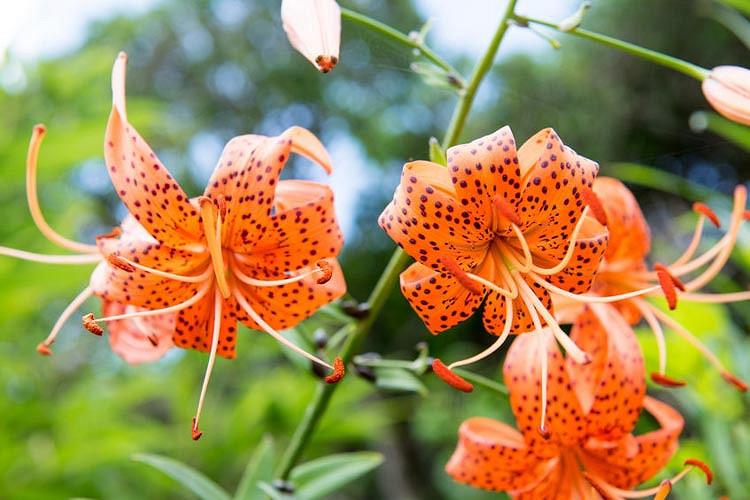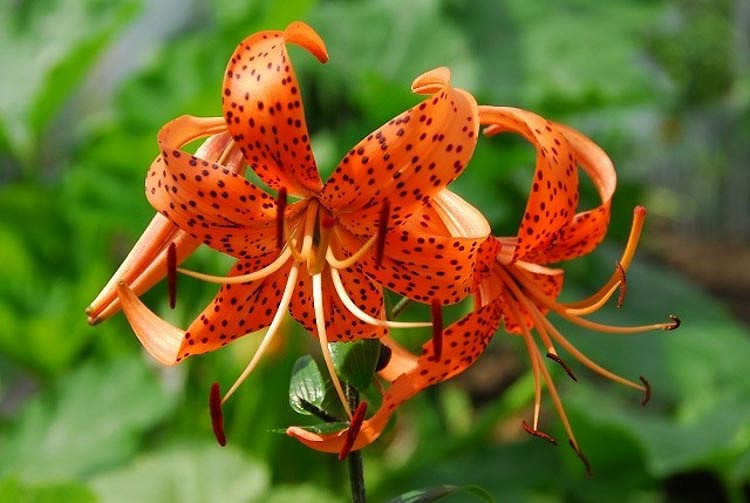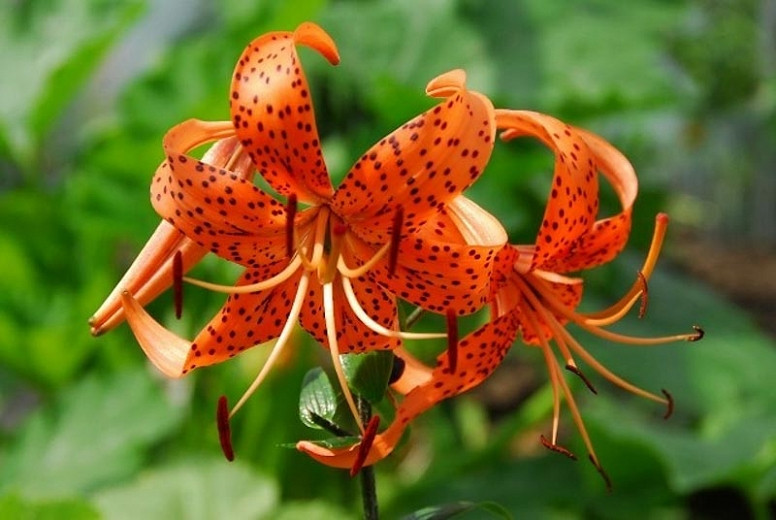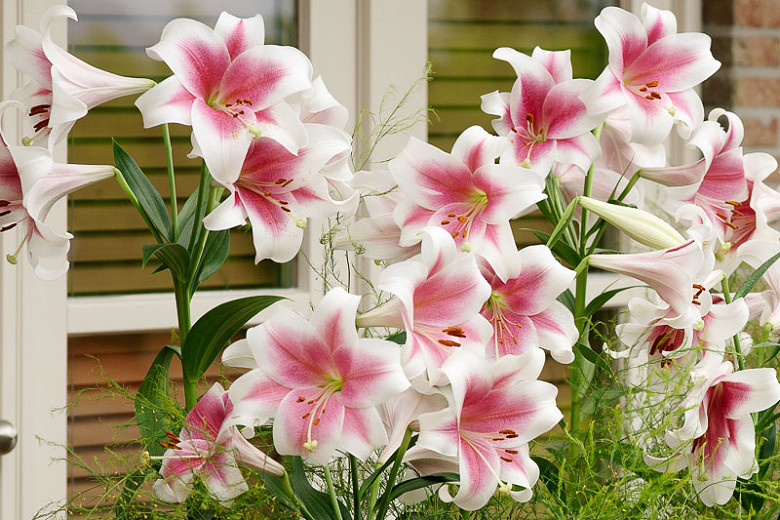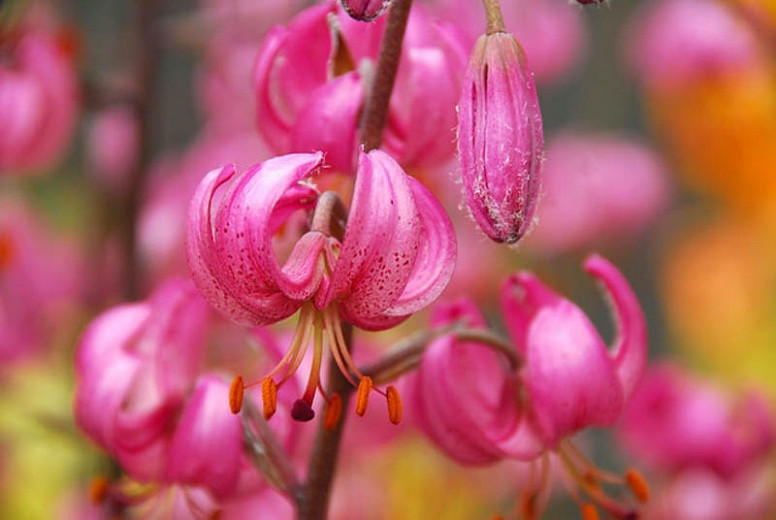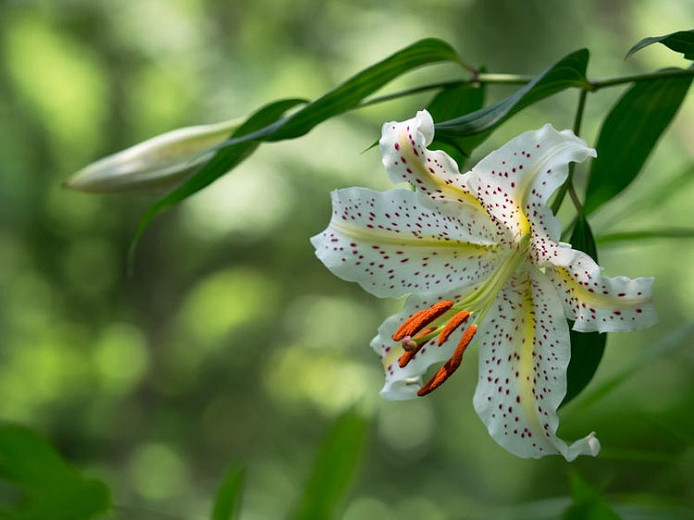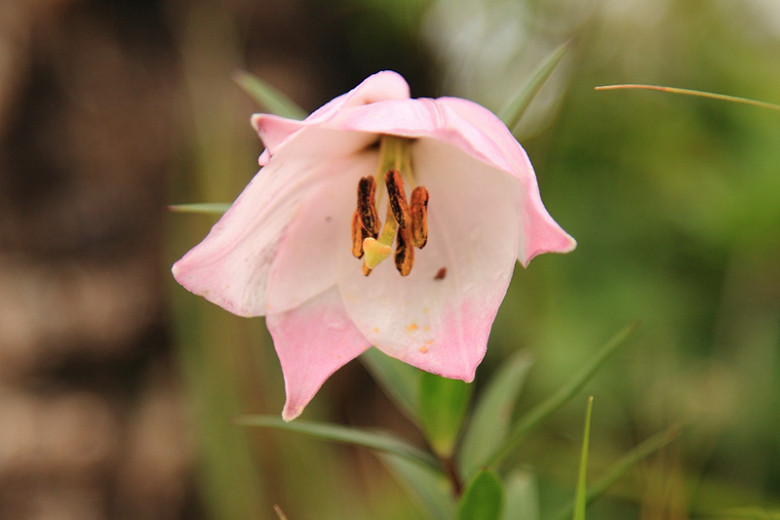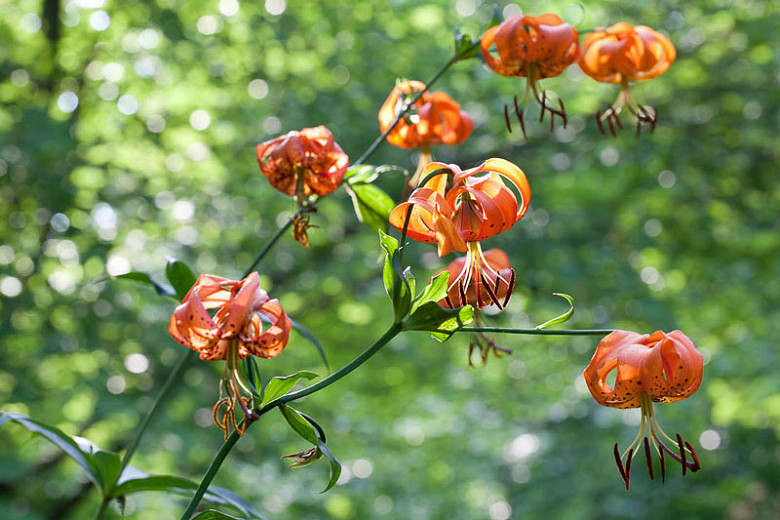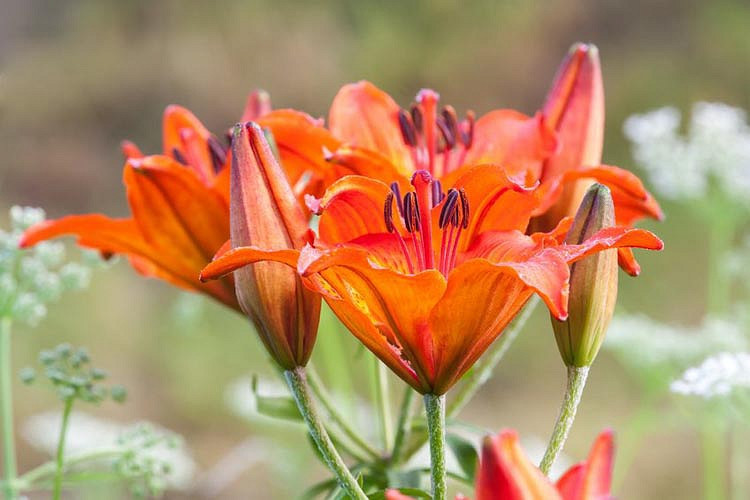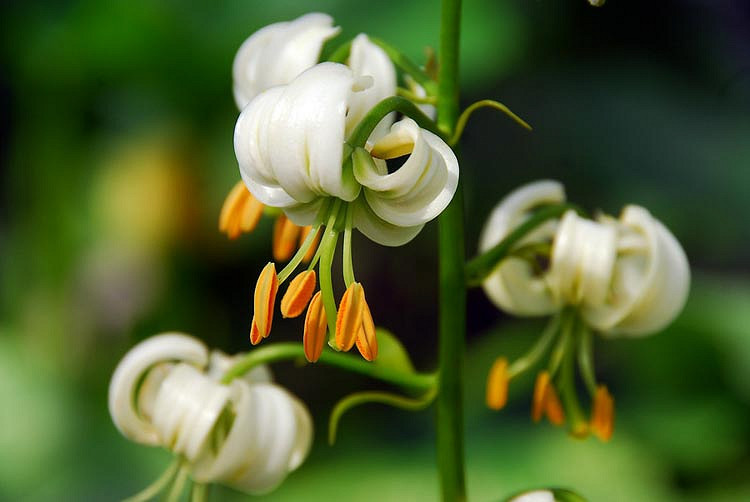Lilium lancifolium (Tiger Lily)
Prolific and impressive, Lilium lancifolium or Lilium tigrinum (Tiger Lily) commands our attention with its bright and showy, orange-colored flowers covered with black or deep crimson spots, giving the appearance of the skin of the tiger
Prolific and impressive, Lilium lancifolium or Lilium tigrinum (Tiger Lily) commands our attention with its bright and showy, orange-colored flowers covered with black or deep crimson spots, giving the appearance of the skin of the tiger, hence its common name. Native of China and Japan, Tiger Lily is robust and easy to grow. Amazingly decorative, it features unscented 5 inch blossoms (12 cm), mostly downward facing with gracefully recurved tepals. Mature bulbs can produce up to 40 blossoms (!!!) and will multiply to form clumps over the years.
- Blooming in mid to late summer (when most other lilies are finished), this lily comes back year after year and constitutes an excellent border plant, providing striking color and contrast to the perennial border and mixes beautifully with annuals and other summer flowering bulbs. This Lily is well suited to containers as well as to the cutting garden too (the blossoms can last up to 2 weeks in a vase).
- Growing up to 2-5 feet tall (60-150 cm) on slender stems clad with strongly lance-shaped leaves, Tiger Lilies are highly disease-resistant and perform best in full sun or part shade. They are not fussy about soils, provided they are well-drained. Good moisture is required and dry soils should be avoided!
- Plant in spring or fall. Plant in groups of 3 bulbs at a minimum for a striking display! When flowering is over, cut back leaves and stems after they turn yellow.
- Toxic to cats (though not for dogs or any known species)
- These Lilies are members of the Species and cultivars of species Division (IX) which includes all species and their subspecies, varieties and forms, and cultivars selected therefrom (excluding those derived from formosanum, longiflorum, philippinense and wallichianum). There are 9 different types of lilies classified by the Royal Horticultural Society. And they are all real eye-catchers!
Requirements
| Hardiness | 3 – 9 |
|---|---|
| Heat Zones | 1 – 7 |
| Climate Zones | 2, 3, 4, 5, 6, 7, 8, 9, 14, 15, 16, 17, 18, 19, 20, 21 |
| Plant Type | Bulbs, Perennials |
| Plant Family | Lilium – Lilies |
| Exposure | Full Sun, Partial Sun |
| Season of Interest | Summer (Mid,Late) |
| Height | 2' – 5' (60cm – 150cm) |
| Spread | 7" – 8" (17cm – 20cm) |
| Spacing | 8″ (20cm) |
| Depth | 8" (20cm) |
| Water Needs | Average |
| Maintenance | Low |
| Soil Type | Chalk, Clay, Loam, Sand |
| Soil pH | Acid, Alkaline, Neutral |
| Soil Drainage | Moist but Well-Drained, Well-Drained |
| Characteristics | Cut Flowers, Fragrant, Showy |
| Tolerance | Deer |
| Attracts | Bees |
| Garden Uses | Beds and Borders, Patio and Containers |
| Garden Styles | Informal and Cottage, Traditional Garden |
